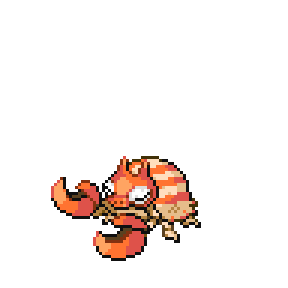Page 6 / 6 of 5428 pokedex entries by .izik.
Flying through deep caverns and abandoned mines, it hunts stealthily. While resting, it tucks its wings in tightly, resembling an ordinary boulder.

Gozor's body is encased in a brown metal, with sharp clusters of stones embedded for additional defense. These features help deter potential predators.
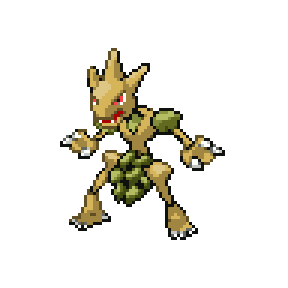
Gockle makes its home near cave edges under Pomeg Berry trees, storing fallen berries in its shell along with pebbles. The juice it produces from these berries is highly regarded for its exquisite taste.

When coiled, it extends sharp spikes from the gaps in its rocky body. These spikes make it a formidable defense against predators.

The ruby-like portions of Gocario's body glow intensely when it senses an enemy's aura. This light can even illuminate dark caves, making escape difficult for foes.

The stones on its body are tougher than iron, granting it immense durability. Using its massive tail, it smashes cave walls and devours any fossils that fall.

The purple portions of its tail excrete toxic dribbles, weakening foes. It uses its rocky arms to slam opponents who resist the poison's effects.
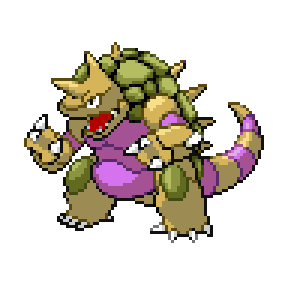
Its rocky abdomen stores billions of silk strands that it uses to ensnare prey. The silk becomes brittle and fragile when exposed to sunlight.

It drills tendrils into cave ceilings before dropping onto unsuspecting explorers. Its stony body has a shale-like texture, blending with the environment.

It clings to cave ceilings, blending seamlessly with its surroundings. Small wicks on its rocky body light like candles when others draw near.
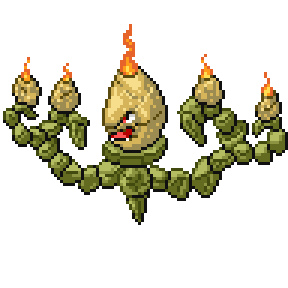
The hot rocks covering its body lose their heat when out of direct sunlight. Under sunlight, however, they can reach searing temperatures hotter than a stovetop within seconds.

It latches onto prey like Arbok, draining their life force with a powerful bite. Its stone body makes it immune to the prey's final struggles.
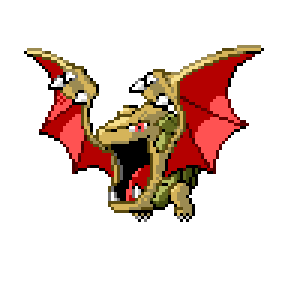
Goeye carves a large shield out of a boulder when it is young and carries it around. Should it find a gem deposit, it will break them apart to eat.
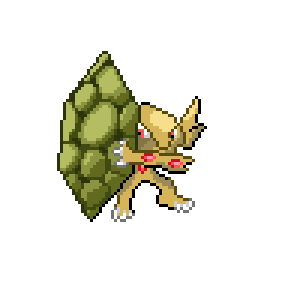
It emits loud screeches while flying through the night, disorienting foes. Once its target is dizzy, it strikes with the rock-like portion of its tail.

The mucus dripping from its body hardens into a stone-like material after prolonged sun exposure. This hardened mucus is widely used in hospitals for crafting inexpensive casts for broken limbs.
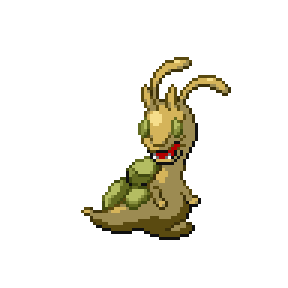
Its soft, plush-like body is encased within dense, unyielding stones. If an attacker approaches, it retaliates by hurling boulders to drive them away.

Lying motionless on sun-soaked beaches, it appears lifeless during the day. At night, it uses kelp-like appendages to drag itself to graze on grass.
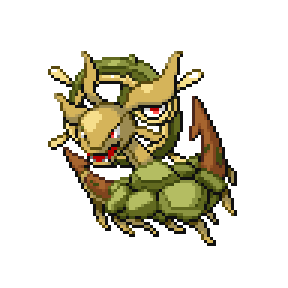
Gor floats slowly across the night sky, its gaze fixed on a single constellation. It refuses to look away, even when attacked.
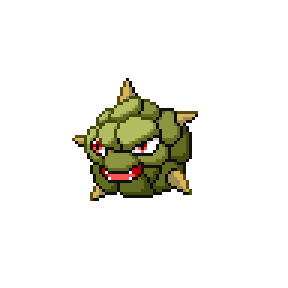
If disturbed while gazing at the stars, Gor's body explodes. The explosion flings sharp stones in every direction.
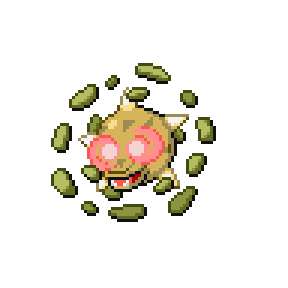
Gochoke can spend decades searching for the perfect boulder, forming a deep bond with it. Even while sleeping, it holds the chosen rock close within its muscular grip.

Gochamp performs powerful uppercuts to knock stones loose from cave ceilings. It consumes these stones as part of its rocky diet.

Clinging to cave walls, it punches through rock in search of Iron Balls. When it finds one, it swallows it whole for nourishment.

The stone at the end of its pendulum has a slight magnetic charge. It is just as hard and unyielding as Gono's rocky body.

Its eyes glow red when it spits fire from its mouth. It can use its psychic abilities to cause an enemy to spontaneously burst into flames.
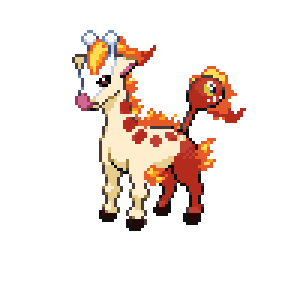
A flock of Ponyinder will coordinate their efforts to put on shows for nearby towns. They coordinate in the sky to create glowing designs.
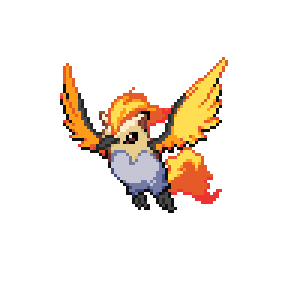
The fur of a Rapicate will stay warm to the touch for months after it is shed. Because of this, weavers in Unova use it to make winter clothing.

It will awkwardly run for long distances to show off its fiery mane. It is extremely vain, stopping for anyone who admires it.

If it stops running for even a moment it will fall to the ground due to its odd weight distribution. It will use telekinesis to hoist itself up.

It makes its home near coal-fueled power plants. When none are available, it will hide in the chimneys of residential homes.

It has extremely bad memory issues. Should anyone wrong a Slowrill, it will forgive the transgression within two minutes, forgetting it entirely.

It will spend its time attempting to balance on floating logs. Due to its poor weight distribution, this usually results in it falling off.

It very frequently forgets to eat and drink. Due to this, it will lose weight rapidly unless someone else feeds it.

It cannot fly more than a few inches off of the ground. While it hovers it will drag its tail across the ground, making a line in the dirt.

Its claws will easily break off if it's not careful. The white portions ooze a frosting-like substance that is incredibly sweet.
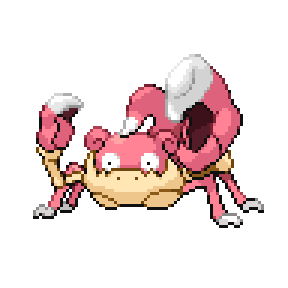
A swarm of Warfree made its home on Wayfarer Island years ago due to the high quantity of Oran Berries growing there. Warfree cleans the berries thoroughly with gentle bubbles from its mouth before eating them.

Wartata swims just below a pond's surface, with its ears barely visible above. It uses this stealthy approach to avoid predators.

The ears on Warish can hear more clearly underwater than on land. This helps it when avoiding predators while swimming.
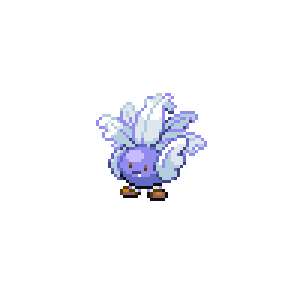
Slowfree have trouble flying due to the weight of the shell on its tail. It is primarily active in the mornings, when it consumes flowers.

It dances extremely slowly during the late evenings. However, it will dance slightly faster if a group of eleven or more is watching it.
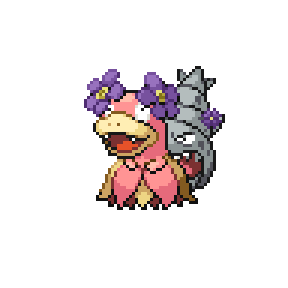
It sleeps inside its shell for days on end. If you startle a Slowth awake, it will let loose blasts of psychic energy.

Because of its frequent headaches, it has a very slow reaction time. It sweats constantly, letting loose a sour odor.

The spikes on its shell fall off and regrow on occasion. When ground up, the shells are used as an ingredient for toothpaste.
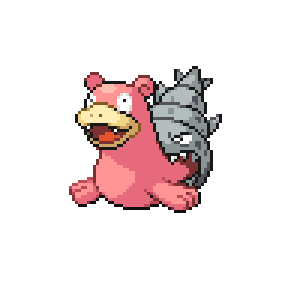
Magneode rolls its silver-plated body along powerlines, feeding on static and current. The more it eats, the faster it becomes.

Electricity builds in Magnechan's steel fists. When threatened, it releases blasts of electricity strong enough to scorch stone.

Magneon's neck is ringed with fine metal wires that form a mane. It absorbs static electricity and stores it within the wires for later use.

Magnegon's body can convert into pure code to travel cyberspace. Strange distortions affecting videos often signal its passage through web pages.
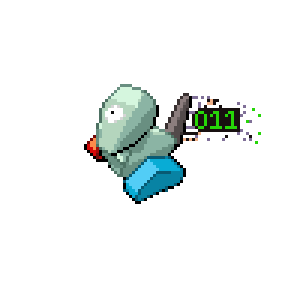
Magnedile swims near hydropower plants when tired. Somehow, even being close to the dam invigorates it, helping it regain stamina.
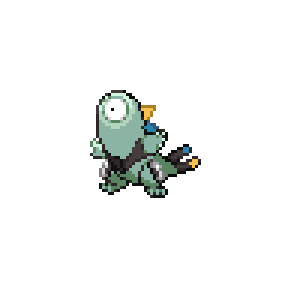
Magnechu digs through wires of factory equipment to absorb electricity. If it gets too excited, it unleashes sparks, shocking itself.
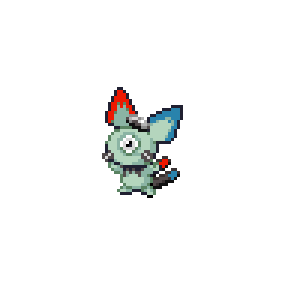
After having a terrifying vision, Magnetu's steel body becomes harder than normal. This defense mechanism helps keep it safe from what it saw, even if it is years in the future.

Magnepom discharges jolts of electricity from the magnet on its tail. It can do so mid-leap, often stunning foes before landing.
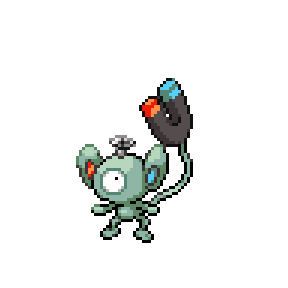
Magnekrow floats around power plants at night, making a beeping noise that sounds like chirping. It greedily eats metal scraps it finds.

Magneicate latches onto prey with its sharp metal fangs. It then unleashes a devastating Zap Cannon to incapacitate its victim.

When hungry, Magnegar's magnetic field weakens. It glides atop powerlines, absorbing electricity to recharge and restore its levitation.

Magnesel's steel-coated body is extremely cold to the touch. It channels electricity through its claws when striking.
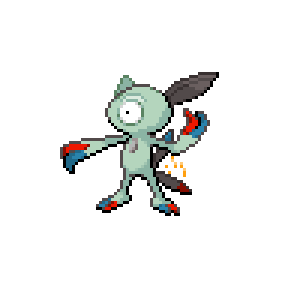
The thin aluminum feathers on Magnerow's wings spark as it glides. It uses static to disorient prey midair before striking.
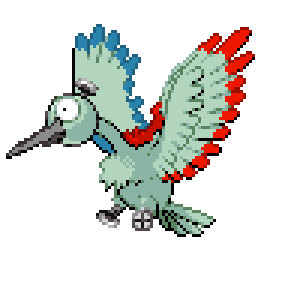
Though it has no mouth, eerie barks echo from Magnedour's steel shell. These sounds grow louder when storms are near.
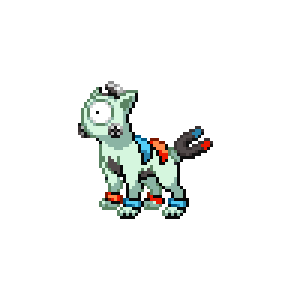
Magnetler's antlers generate electricity as it gallops through wooded areas. If startled, it releases a strong electric shock.

Its tungsten-plated body crackles with a constant electric charge. Magnekid can overload machines just by brushing against them.
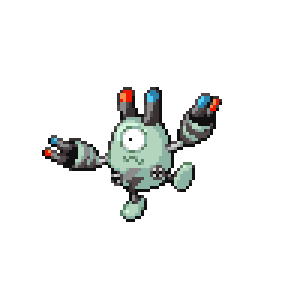
Magnetank's milk produces cheese with a distinct metallic flavor. Though nutritious, its sharp taste makes it difficult to use in most recipes.

Magnechu's aluminum alloy body releases shocks that can disrupt nerve signals. Victims often twitch and fidget uncontrollably afterward.
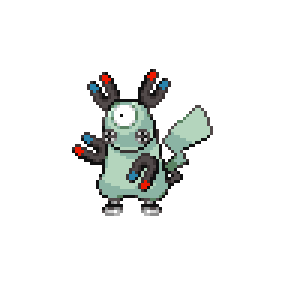
Using its tail magnet, Magneshrew senses nearby metal ore deposits. It adjusts its tunneling path to mine precious metals efficiently for an unknown purpose.

Magnetang's body is coated with a thick titanium alloy. It crackles with electricity as it floats through abandoned factories.

Magneiard's blades are extremely magnetic, ensuring it hits metal-coated foes like Aron with precision. Its claws can pierce solid iron.

Magnecada's silver-coated body digs through dirt near power plants. It senses ore deposits with its magnetic claws, navigating to them to eat and strengthen its shell.

Magnebarel swims through deep waters while releasing a quick Thundershock at anything nearby. It primarily uses the shockwaves to stun nearby Lotad before feeding.

Magneolu's eye can detect faint auras in humans. It seeks out Trainers with kind auras, hoping to form a lasting bond.
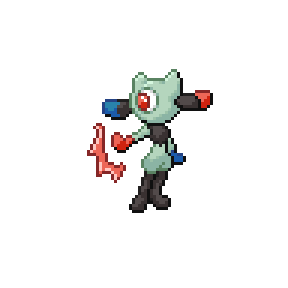
Magnexio uses the magnets on its tail to sense prey like Skarmory. It unleashes bolts of lightning to take it out mid-flight.

The melodic beeps from Magnepuff's aluminum shell resemble a lullaby. Listeners often feel drowsy without knowing why.
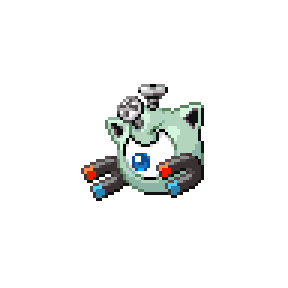
The steel alloy covering Magneon's body is magnetically charged. It floats slightly above the ground as it trundles forward.
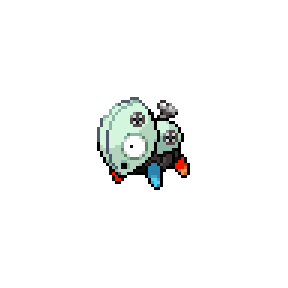
The lead-like substance that covers Magnemander's body is hot to the touch. It radiates faint heat even while hovering in the air, and its torso glows when angry.
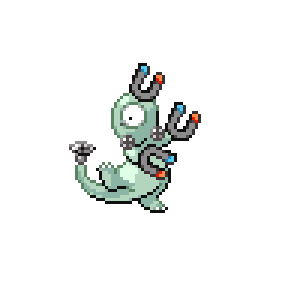
Coated in tungsten plating, Magneile swims through desert sands as if gliding through water, searching for lost scrap and prey.

As it flies, Magnebat emits a magnetic pulse that helps it locate Steel-type Pokémon like Aron. It swoops silently through old quarries to hunt.
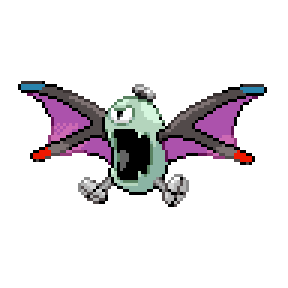
Magnefisk's body is coated with a thin metal plate. If accidentally stepped on, it causes a massive electrical explosion.

Magnelucha clings to iron walls using its magnetic field. From there, it launches intricate flips and strikes with precision.
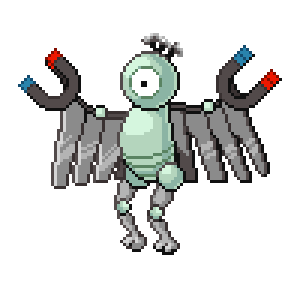
Magnenat's tiny metal fibers are highly magnetic. It attracts discarded cans as it walks, shaking rapidly to dislodge the trash.
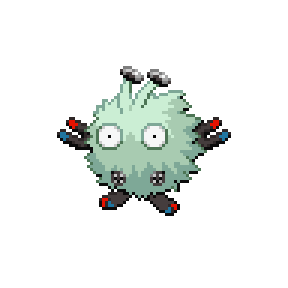
Magneth loves collecting shiny metal objects. Its magnetic whiskers help it find the trinkets easily, after which it hoards them in its den.

Magneler's body is encased in thick iron ore. It levitates using violent magnetic bursts, often leaving shattered rocks in its wake.
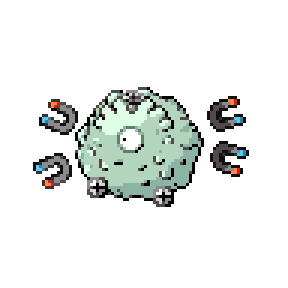
When tired of swimming, Magneel clamps its magnet onto passing submarines. It drifts silently along for long stretches underwater.

Magneorb sticks to power plant rafters when sleeping by using its magnets. If it sees an intruder, it drops onto them to explode.

Magneode sleeps with its magnets facing outward to stay aware of its surroundings. If startled, it can explode with enough force to level a building.

Magnelee's steel-coated legs can extend up to 15 feet. It can easily kick a Flying Pokémon out of the sky with a Hi Jump Kick.

Magnebuzz swings its arms into the air during thunderstorms, hoping to get struck by lightning. Its body is made up of a thin steel alloy that conducts electricity.

Magneto transforms into miscellaneous objects within power plants, reverting to its true form to absorb power when no one is looking. It will also revert if exposed to a high magnetic field.
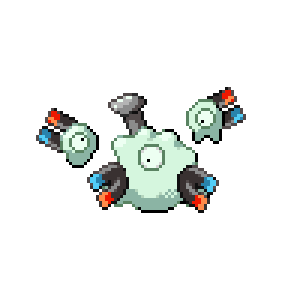
Magnebok's body is coated in a thick aluminum. A metal-scented dark blue venom courses through its body, which it dispenses after biting a foe.

Magneslash digs through mountainous regions searching for metal ore deposits. The more it eats, the stronger its electric attacks become.

The metal spheres on Magneiard's head each have their own eye, allowing it to view all directions at once. It uses its silver blades to slash at foes who get too close.

While turning its gears clockwise, Magneink's body steadily becomes more magnetic. Should it turn the other direction, its magnetic abilities fade.

Magneang uses its magnets to stick to machinery in industrial buildings to absorb energy. It can take up to five full-grown humans to pull it off the machine due to its powerful magnets.

Its eyes can see for extremely long distances. At night, it will hover far above the ground, looking for predators.

Magnebat makes tiny sparks as it flies through caverns. It unleashes Sonic Boom with the aid of others of its kind before swarming a foe.
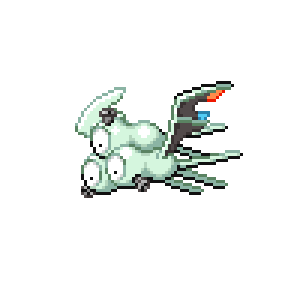
Magnebat makes its home in the roofs of power plants. At night, it flies out to search for prey like Klink.
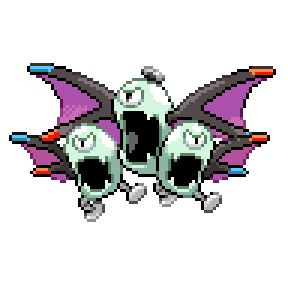
Magneoom leaks a bitter Wepear Berry scent from the silver orbs on its head. It attracts Steel-type Pokémon, which it knocks out with a powerful electrical shock.

Magnemoth flutters through marshes at night. It unleashes silver powder from its wings to put foes to sleep before unleashing high-powered electric shocks.

Magnebra breaks into power substations at night to siphon excess energy. If it spots a human, it will erase their memories with its psychic power.

Magnebell's magnets in its mouth are extremely strong, pulling small Steel-type Pokémon in with incredible force. After it eats enough, it lets loose intermittent sparks as it sleeps.

When hungry, Magneler becomes slow and extremely magnetic, pulling metal towards its body automatically. It will feast on the metal until it has enough energy to move freely again.
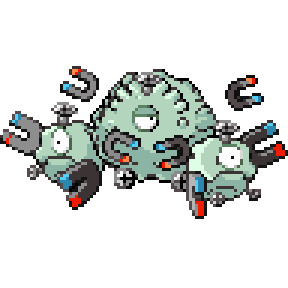
Magnedrio's metal heads slam together before unleashing a powerful electrical attack. It can float up to 20 feet above the ground due to its magnetic powers.

Magneel uses its magnets to stick to ships when it is too tired to swim. It can sleep while being dragged for long distances.

The leek that rests against its body tastes extremely bitter. Cooking with it is not recommended for most dishes.

Its body is harder than stone and grows even harder while it rests. The shell will be shed when it becomes too hard and can be used for soup broth.

It flattens the ground around its nest by repeatedly smacking it with its leek. This behavior marks its territory with precision.

The onion sprig it carries emits a rancid smell, which it uses as a weapon by throwing it at foes. This tactic deters even the bravest predators.

Its leek passively absorbs latent psychic energy. When held above its head, it channels this power to induce vivid and terrifying nightmares.

It spins its body like a pinwheel, using its leek to deliver rapid strikes. This unique movement confuses and overwhelms its foes.

Its rubbery leek doubles as a pogo stick, compensating for its subpar flying abilities. This quirky habit makes it surprisingly agile.

The puffs on its body are composed of thousands of tiny purple flowers that glow eerily at night. This mesmerizing display attracts both friends and foes.
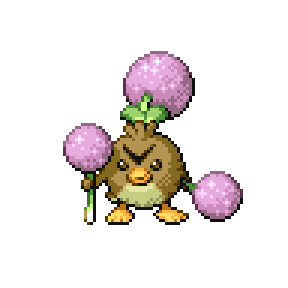
Its wings emit high-pitched noises that disorient foes, sometimes causing confusion. The intensity of the buzz is strong enough to shatter glass.

The teeth in its mouth resemble tiny onion sprigs but remain sharp enough to cut through stone. The teeth let out a horrible scent when exposed to water.

Its leek is coated with a sticky substance, allowing it to cling to tree branches. This adhesion helps it stay hidden from predators.
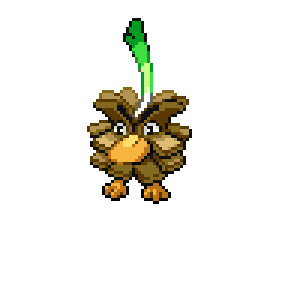
Despite its awkward appearance, it moves swiftly across sandy beaches. Its extra legs help it nimbly avoid obstacles.

Its leek is as hard as iron, capable of severing tree limbs in a single swipe. This weapon is both elegant and devastating in battle.

It stores electricity in its leek, releasing shocks when striking enemies. This combination of power and precision makes it a formidable opponent.
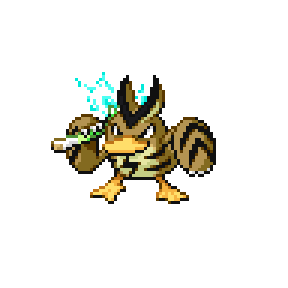
The torch it carries will go out if it is not fed regularly. A Farby tosses loose twigs and saplings into the fire as it walks.
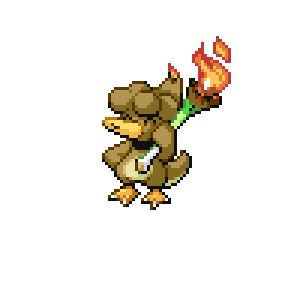
It uses its stick like a saber during fights, holding it in its mouth. Using its wings, it can fight while flying in the sky.

Its ears can be used to manipulate its aerodynamics. Combined with the use of its wings, a Farino has great mobility in the air.
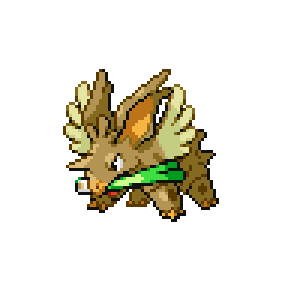
Farloom swings its leek with the precision of a seasoned knight. Each strike scatters spores from the tip, which can confuse and disorient its opponents.
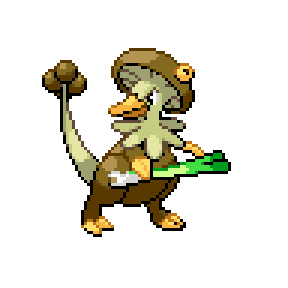
The leeks growing from its body emit an acrid scent during their growth. Ancient civilizations used these leeks as ingredients for early Adrenaline Orbs.

The leek growing from its mouth produces a trumpet-like noise while flying. This sound warns intruders to stay away from its claimed caves.
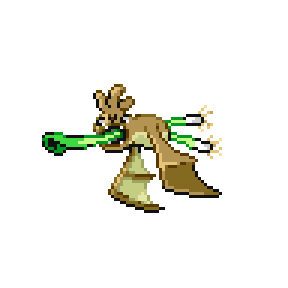
A group of Farolett is known as a battalion, with one member acting as the tactical leader. Their coordinated attacks are highly strategic and efficient.

It often makes its home in abandoned farm silos, feeding on leftover grain. These secluded shelters keep it safe and well-fed.

Its leek secretes a toxic substance that it splashes onto enemies. The toxin induces convulsions, making it a dangerous weapon in battle.

It hops from foot to foot in a rhythmic dance, but when upset, its movements become erratic and chaotic. This display often deters foes.
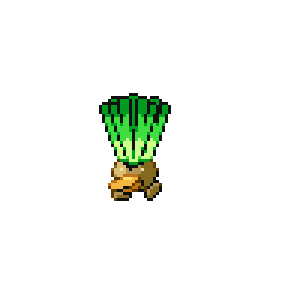
It sleeps in abandoned greenhouses, guarding neglected plants. If a caretaker arrives to tend the plants, it quietly floats away, satisfied.

The leek it carries grows sweet offshoots when planted at night. These are prized by culinarians for their use in creating flavorful curry.
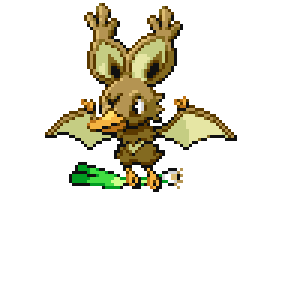
When it wants to rest, it burrows its leek into the ground and balances above it. This precarious position allows it to detect motion via vibrations in the dirt.

The down covering its body is dense enough to absorb impacts during combat. This resilience allows it to fight with surprising durability.

The leek on its head has its own sentience, controlling the sand around its body. If the leek is removed, the entire structure collapses.

Its long legs allow it to wade through shallow puddles without wetting its body. It uses its leek for balance while crossing uneven terrain.

It collects vegetables for its friends, sniffing out the most nutritious options. It proudly presents these finds as thoughtful gifts.

It wiggles the onion-like sprigs on its body while releasing Sleep Powder into the air. This motion spreads the powder more effectively.
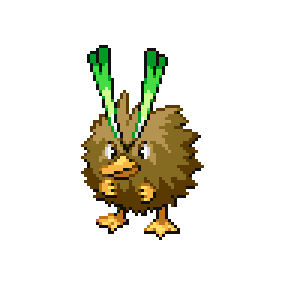
Its leek glows a dim green, luring prey like a beacon. It then releases Stun Spore to incapacitate its targets.

Before engaging in battle, Farbre dramatically tips the large disc on its head, signaling its readiness to fight. It then unleashes rapid, sword-like flurries with its leek, striking with precision.

It channels its frequent headaches into a foe's mind by using its leek as a psychic conduit. This transfer leaves the opponent disoriented.

The spiral on its belly glows green and pulsates when it attempts to put foes to sleep. This hypnotic effect is surprisingly effective.

It telekinetically controls its leek, allowing it to strike from multiple angles simultaneously. This psychic enhancement makes it nearly impossible to predict.

It rotates its leek-like arms to kick up dirt at its foes. When caught off-guard, it spits Acid as a quick defense.

When sleeping, its heads point their beaks inward to form a protective circle. This stance helps it stay safe from predators while resting.

The tongue of a Dotung is extremely dry and molts constantly. The feathers that fall from it are extremely coarse and shouldn't be used in pillows.

A Dopod will peak its heads out of its shell if it detects prey. It then hides its heads back inside the shell, waiting to strike.
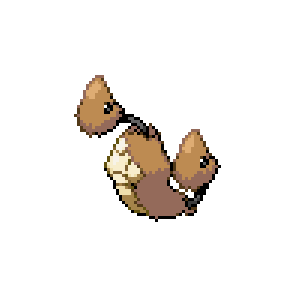
When hunting, it will throw its baby as a distraction. Despite its size, the infant can hold its own in most combat situations.
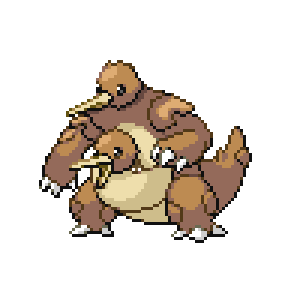
If it spots prey while flying, it will immediately descend on the creature. Using its second head, it will peck viciously until the prey is immobile.

The beak on its right head is noticeably sharper than the left, giving it a slight advantage in attacks. This asymmetry is useful in combat.

It primarily hunts on foggy nights. When it spots its prey to will dash wildly towards its victim, arms extended.
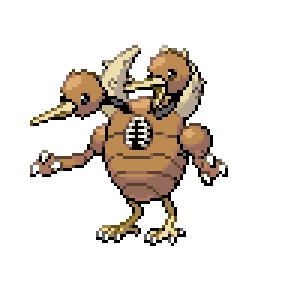
It is constantly pecking at the ground, looking for food. Its tails can detect temperature changes, whipping wildly in hot weather.

It hangs from large trees with a thin, translucent string. If it spots an enemy, it will notify any other Douna in the area.

Its body stretches and contracts like an accordion as it moves, allowing it to slip through tight spaces. This unusual flexibility helps it avoid obstacles effortlessly.
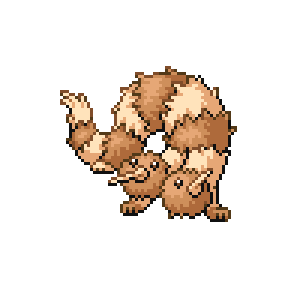
It will let loose a cry that sounds like an infant. The cry is slightly distorted, as if being played over a radio.
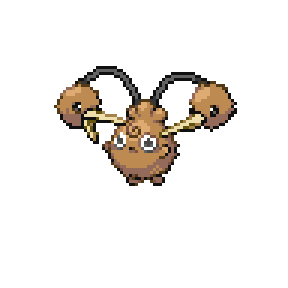
The heads are joined and share a single central eye, giving them a unified vision. This connection helps them coordinate perfectly in all actions.

It charges electricity while it runs. The orb on its rear head preserves the power for later use much like a battery.

The leaves that grow on its body are as hard as stone. It makes an active effort to never go near sources of water.
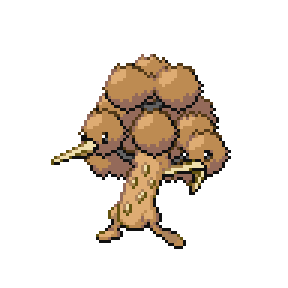
The head at the end of its tail constantly watches for danger, often causing it to lose sleep. Its vigilance keeps it alert, even when exhausted.
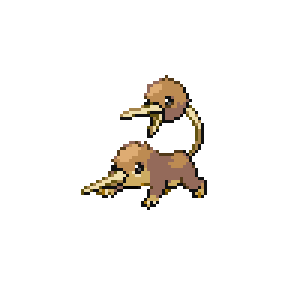
The rear head moves on its own and keeps a lookout for predators. Should it see one, the head will take primary control of the body.
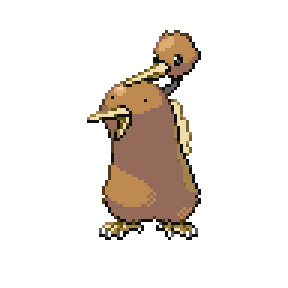
The head on its tail is always grooming its fur, keeping it tidy. This habit helps it stay sleek and presentable in its natural habitat.

It stands on cliff edges, scanning below for predators, and releases a psychic blast when threatened. This quick reaction provides a chance to flee safely.

Its beaks can spit sharp balls of needles, which it uses to line its nest. This spiky barrier deters intruders from disturbing its home.
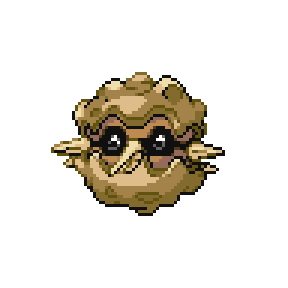
The beak on the end of its tail is extremely sharp. Certain Dogar have been found to be able to break through steel with little effort.
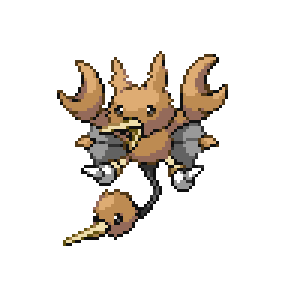
Its feathers were once collected to stuff mattresses due to their softness. This legacy is still remembered in folklore, despite rarely being used.
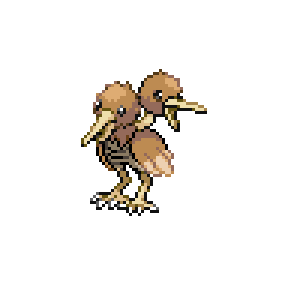
The eyes on its main head are unable to see light, instead only being able to view heat patterns. With this sight it can hunt at night with ease.
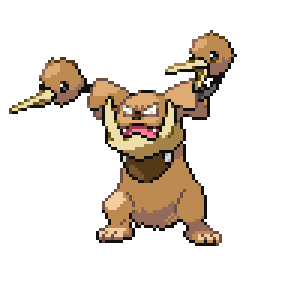
The horn on its face is actually one large feather. In combat, this feather will become harder than granite.

The bubbling mud covering its body heats up intensely when it becomes angry. The mud itself is used in beauty treatments throughout Sinnoh.
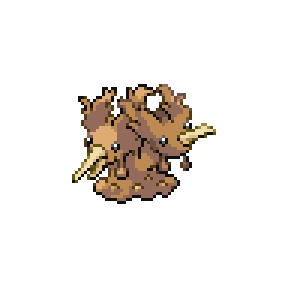
It clings to trees and pecks at the wood to access the sweet sap within. This favorite treat keeps it coming back to the same trees daily.

Its front talons are extremely sharp. It uses them to consume large quantities of dirt for future use in combat.
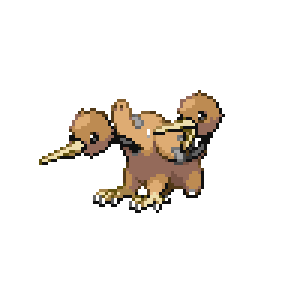
It will rapidly roll up canyon walls if it sees anyone get too close to its nest. It can reach up to 120 mph rolling this way.
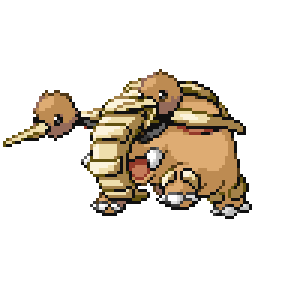
It primarily stands on its rear legs while hunting. Doing this, it will be able to move in complete silence before it strikes.

Each of its sharp beak tips contains venom that can immobilize prey. A single jab is enough to render smaller Pokémon helpless.

It converts the sap it drinks from trees into an extremely sweet milk. This milk can cause insomnia if consumed in large quantities.

Only the head on the tail of Dochu can see. It will chirp directions to the main head to guide it while moving.
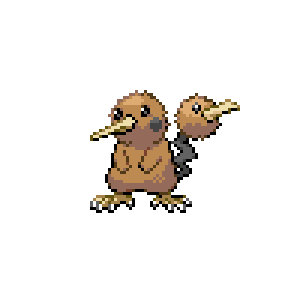
Both of Dochic's beaks are extremely hot, glowing faintly when it gets excited. It uses them to ward off predators and defend its nest from intruders.
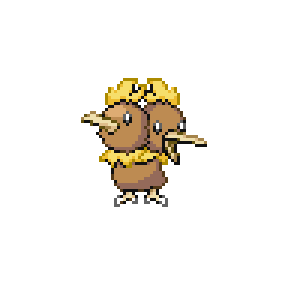
While digging, it will pull its heads close to its body. Its heads will poke through small holes to the surface, waiting for prey to get close.
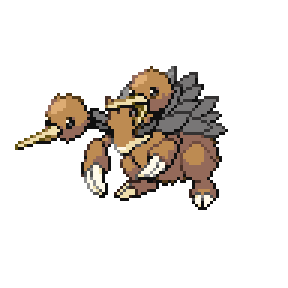
Doran search for prey late into night. It will chirp cutely if it sees a campfire, goading travelers to investigate the sound.
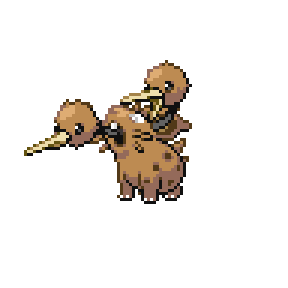
Its feathers change color to match its environment, providing remarkable camouflage. This adaptation allows it to remain hidden from both prey and predators.

It digs its talons into cavern ceilings while hunting. When it strikes, it clamps prey with its beak and pulls it up into its main mouth.
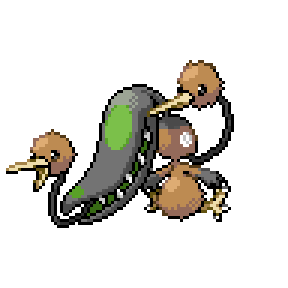
The fur on its body grows without stopping, slowing its movement as it ages. The fur itself is extremely soft and coveted by merchants in Hoenn.
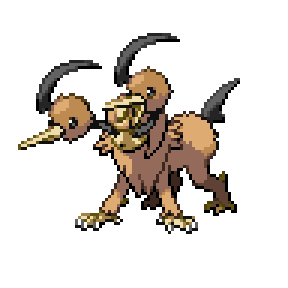
Its body is extremely light, allowing it to jump between trees without a sound. If it sees travelers, it will hide until they make camp, then strike.

The legs on the top of its head are much faster than the legs on the bottom of its body. When startled, it will flip over and dash away.
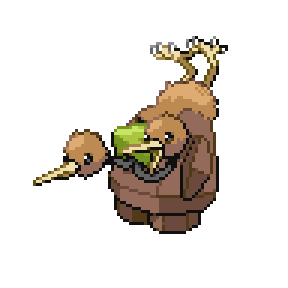
It has copious amounts of venom in its beaks. Should it see a foe, it will alternate pecking with each head then finish them off with its horn.
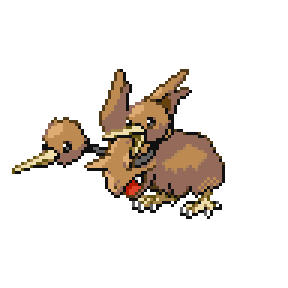
The beaks on its arms are extremely sharp. Using them, it latches onto its prey and cuts into its victim with its center blade.
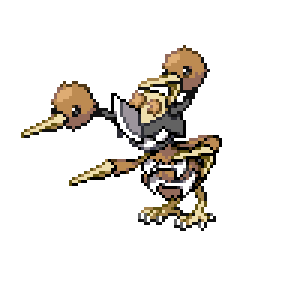
The color of the fins on its head changes as it ages. If the fins are black, it is considered elderly and spends most of its time resting.

The color of the fins on its head changes as it ages. If the fins are green, it is still an adolescent and quick to anger.
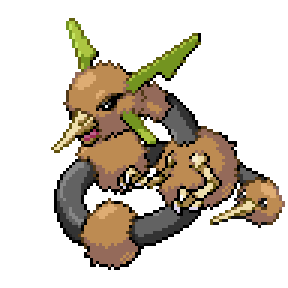
It has enough strength in its rear head to support its entire body. During a fight it will extend and swing both necks in a whip-like fashion.
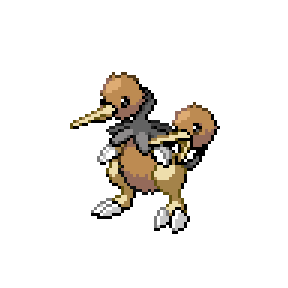
It is mostly nocturnal, hunting after nightfall. It will grab prey with its beaks then fly high in the air before dropping them.

Each of the beaks on its body have their own stomach. It will passively open and close its beaks while sleeping, hoping for an easy meal.
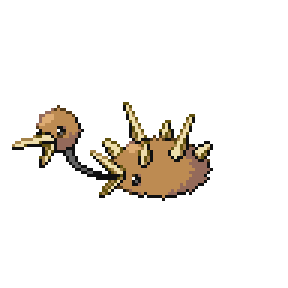
It wraps its long body around tree branches before falling asleep, secure from ground-dwelling threats. This habit ensures a peaceful rest in the treetops.
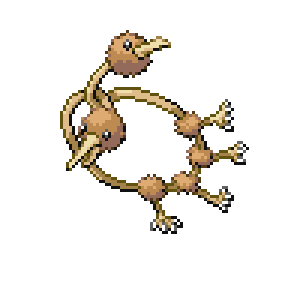
It will wait in trees for days at a time, waiting for weak prey to pass by. Once it spots a victim, it will extend its tail and snatch it.
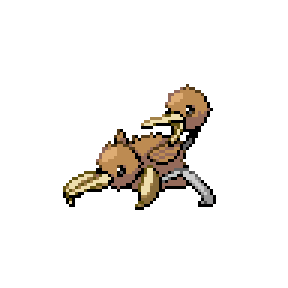
The tufts of fur that grow out of the feathers on its head fall off every summer. Some artists in Johto use this fur for making paintbrushes.

Its body is filled with air. If it decides to jump for any reason, it will struggle to descend back to the ground.
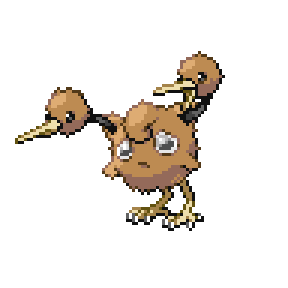
It uses its beaks to dig through sand at a rapid pace, allowing it to bury itself quickly. This trait provides an escape route from danger.

While it has trouble hearing, its eyes can see for miles. It will hop rhythmically when chasing its prey, while screeching like a creature in pain.

Its upper head peeks out from tall grass to scout for predators before emerging fully. This cautious behavior keeps it safe in the wild.

Each beak on its body will squawk in unison if it sees food. It will then lay down on the food and roll, allowing each mouth to have a taste.
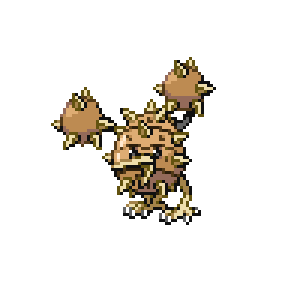
Depending on the time of the year it prefers, a Doinder will grow different colored remiges. The flight feathers will be green if it prefers summer.
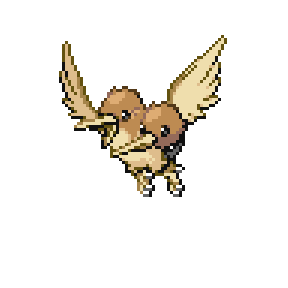
The weak venom in its beaks becomes much stronger when faced with a life-threatening situation. This defensive mechanism gives it an edge in desperate moments.
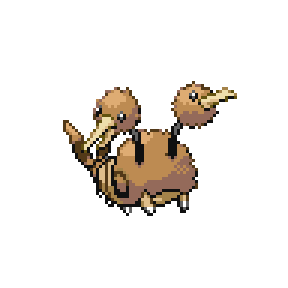
Doom's two heads share responsibilities - one watches for danger while the other eats. If a foe approaches, the watchful head releases a cloud of toxic pollen as a defense mechanism.

It balances perfectly on either of its two beaks before launching into a powerful kick. This move is both impressive and effective in combat.
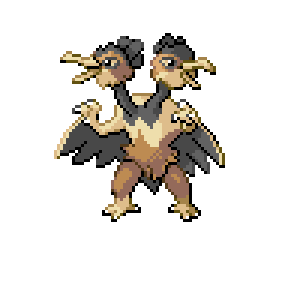
It absorbs sunlight directly into the crowns on its heads to fuel its energy. During sunny days, it becomes more active and agile than usual.

Its feathers are actually trillions of tiny needles, providing both protection and insulation. These spiky needles make it difficult for predators to approach.
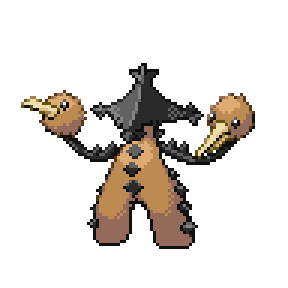
The "sand" covering its body is actually composed of tiny feathers. These feathers provide insulation and a unique texture for camouflage.
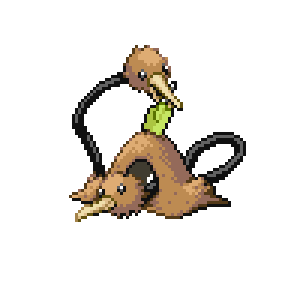
The heads are connected internally to the fungi growing on its back, which control its limbs entirely. This symbiosis allows it to move with precision and efficiency.
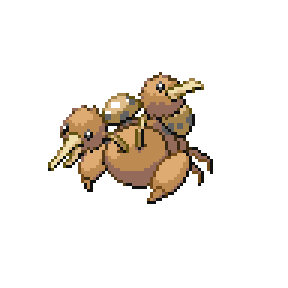
While integrated with the fungi, the heads are not fully sentient, emitting passive chirps. They spread spores onto other creatures as a natural behavior.

Dopin loves planting crops and often sits beneath Pinap Berry trees. It uses its heads to peck off ripe berries, which it then plants in the soil to grow new crops.
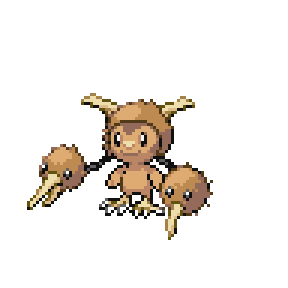
It sheds an odd powder from its wings while it flies. Should the powder land on a human, it must be washed off thoroughly to avoid infection.
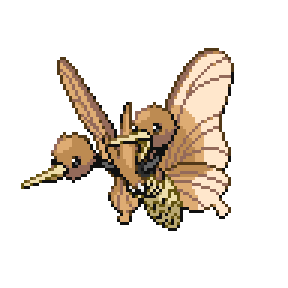
Doape pecks at enemies with surgical precision when in a rage, targeting vital points. Any interruptions only serve to make Doape even angrier.

Its large feathery pod-like body is commonly seen pulsating in potato fields, its roots drawing nutrients from the crops. Farmers regularly remove these pests, fearing what creature could emerge from the quivering structure.
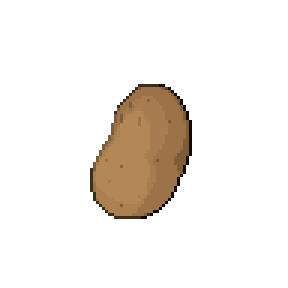
Dobell sprints through jungles, scattering tiny feathers as it moves. Researchers believe these feathers carry spores that allow it to parasitize other plants.
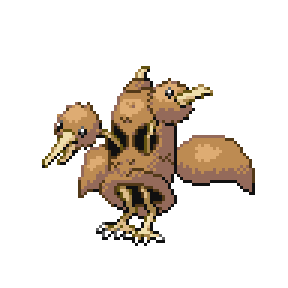
Its talons enable it to travel across the roughest terrains with ease. This adaptation makes it a resilient and agile explorer.
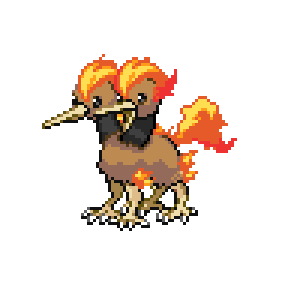
The foot on its head conducts electricity with ease. They flock en masse to power substations to absorb electricity.

The middle head is incapable of eating and receives nutrients from the two heads on either side. This unique adaptation ensures all heads remain nourished.
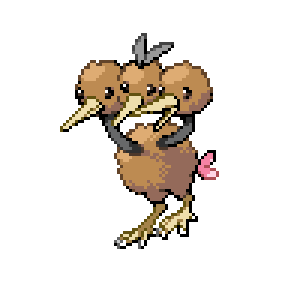
The claws on its flippers are mainly for show and seldom used in battle. It waves them around haphazardly to dissuade predators.
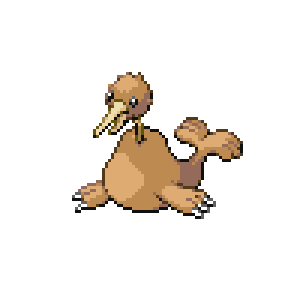
If it trips while running, it will roll away on its orb-like body until it escapes a predator. This motion often confuses enemies, giving it a chance to flee.

It is obsessed with using the feathers at the tip of its bone to meticulously dust its den. This strange habit helps it keep its home spotless at all times.

The feathers that grow from its body are hard as stone. Despite their firmness, they are very light and easily plucked.

The egg of a Dosey is extremely bitter in taste. Should it lose its egg, it will find another one within days from an unknown source.

Although the feathers at the tip of its tail resemble flames, they are surprisingly cool. However, they flicker and sway, giving the illusion of fire.

It has the ability to split into three separate globs, each with its own personality. However, it must rejoin within a day, or it will perish due to overwhelming loneliness.
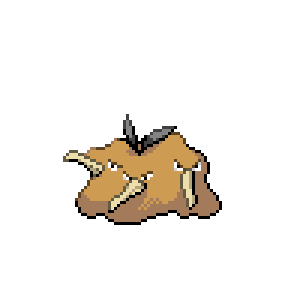
The middle head frequently forgets to eat. Because of this, the other two heads are always foraging for food.

It extends its heads underwater to hunt for aquatic prey, catching small prey with ease. Its ability to hold its breath for extended periods makes it a skilled swimmer.

During combat it will break apart into separate portions. Each moves on its own, with tactics that resemble a sports team's.
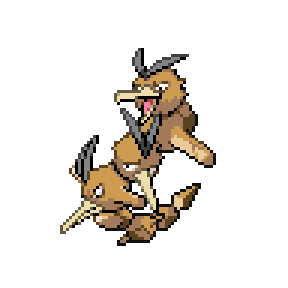
It roars loudest when someone is watching. The noise becomes progressively louder for each person watching it.

Its brown, mud-like body radiates intense heat, making it dangerous to touch. The heat can even scorch the ground it walks on.

Despite its rough appearance, the metal that covers its body is extremely weak. The texture is similar to aluminum and easily torn.
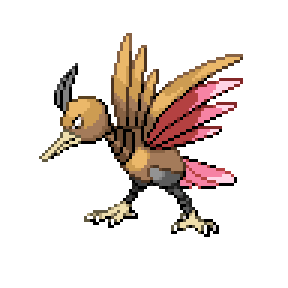
It uses its sharp front claws to attack its enemies. The nails themselves are as hard as steel and able to rend foes in two.

It will cover itself in mud and sleep for days. Should it spot prey, its heads will sprout up out of the mud and make a horrifying cry.

There are two columns of serrated fangs inside its beak, each filled with potent venom. A single bite can paralyze prey almost instantly.

It uses its head to peck at the rocks near its home in hopes of finding a geode. Should it crack one open, it will consume the crystals inside.

It has scales all over its body that are extremely sharp. Using its beaks, it will skillfully scale walls with ease.

It can extend each of its necks up to 15 feet away from its body. Should it detect prey, it will lunge at it wildly, each head moving independently.

Should Dosol sense an approaching tornado, all three heads swing in circular patterns while squawking loudly. However, it also does this when hungry, sad, sleepy, or angry, making it a rather unreliable warning.

It will sing an eerie lullaby to lull its prey to sleep. Then, it extends its long legs to sneak up to the victim, consuming it while still humming.

A Dobat prefers to make its nest deep in caverns. It hates the sunlight, as exposing it for long periods of time will char its feathers.
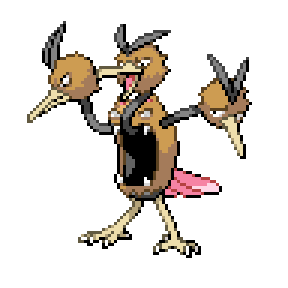
When a Docorio is excessively hungry, its other heads will emerge from the feathers on its chest. When food is found, only the main head will eat.
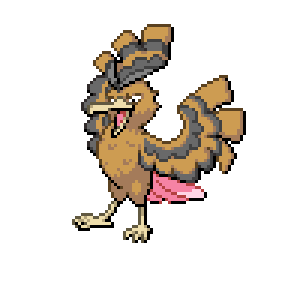
The feathers on its head are filled with a pollen that induces drowsiness. Those who inhale it often fall asleep within moments.

The center head collaborates with the sentient mushroom growing on its back. Together, they maintain complete control over the other two heads, ensuring perfect coordination.

When enraged, Dokin shoots fire from its ears, enveloping its two secondary heads. Their feathers can withstand the heat, allowing them to deliver powerful, heated pecks to opponents.

It releases psychedelic spores from its wings, making those exposed believe they have three heads. This confusion leaves foes dazed and vulnerable to further attacks.

When it discovers silver or gold ore in caves, it obsessively pecks at the stone until the treasure is loosened. It stores shiny objects to display proudly in its nest.

It uses the psychic energy stored in its spoon to enhance its speed when dashing. This energy boost allows it to outmaneuver even the fastest foes.
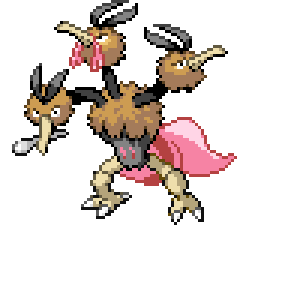
By using its three separate brains, it can read three minds at once with ease. This unique ability allows it to predict movements and stay one step ahead of its opponents.

Each beak has the strength to lift over 800 lbs with little effort. Its power makes it a formidable opponent in battle and competitions.

Wild Dobell very rarely consume anything but vegetation. If it spots an herb it wishes to eat, it will spit acid onto it before taking a bite.

It uses its beaks as pitons for climbing up steep surfaces. It stays away from loose rubble or mud, fearing the fall if it loses its grip.
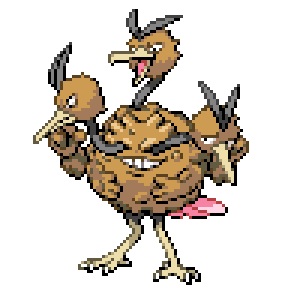
Its feet are extremely magnetic, allowing it to cling to metal surfaces. It can even attract small objects from a distance without noticing.

It can climb up cliff walls by digging its five beaks into the stone surface. This ability makes it an expert at scaling difficult terrain with unmatched agility.
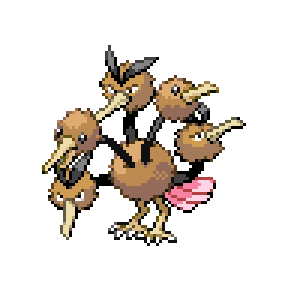
It habitually counts icicles near its nest. Should it ever lose count, it will start from the beginning without a second thought.

Seeown have been used as thermostats to determine the temperature of walk-in freezers. If its tongue becomes warm, the food is unsafe.
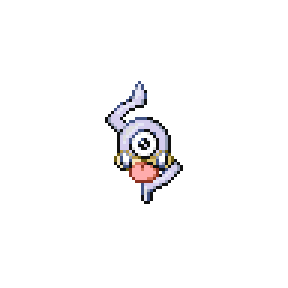
The horn on its head is as hard as iron. It uses it to break icebergs in half while playing in the ocean.

If it gets cold, the shell on its tail will tremble. During warmer seasons, the shell drools a blue fluid to keep cool.

Schools of Dewsea cling to sunken freighters, using the wrecks for shelter. These underwater havens offer protection from larger predators.

While swimming, it leaves a trail of sparkling ice crystals that shimmer in the water. This beautiful path attracts both friends and curious onlookers.

The scales on its body taste like turmeric, making it popular among chefs. This culinary curiosity has made it a rare delicacy.

It whistles an alluring tune that tricks sailors into navigating dangerous waters. Many legends warn of this song, which has led countless ships astray.

When excited its fins glow brightly, lighting up the surrounding water. This shimmering display attracts attention from nearby Pokémon.
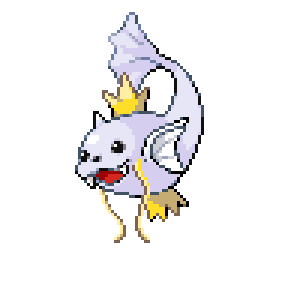
Its smooth body reduces water resistance, allowing it to swim at incredible speeds. This streamlined physique makes it difficult to catch or outrun.

With ease, it swims through powerful whirlpools, unaffected by their pull. Its strength in turbulent waters is unmatched.

The feather on Dewsel's head is cold as ice, and is coveted by collectors. The darker the feather becomes, the more valuable it is considered.

The coldest part of its body is its horn, which remains icy even in warm climates. This frozen horn can chill anything it touches.

It expels clouds of foul-smelling fog to confuse enemies. This stench lingers, discouraging pursuers from following.

The air around its tail is always frigid, leaving a frosty trail behind. Other Pokémon enjoy the refreshing cold it radiates.
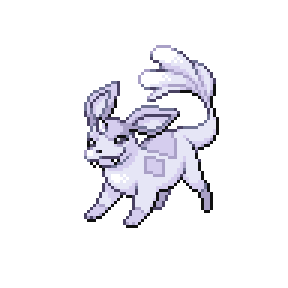
Its tail is incredibly strong, capable of propelling it through currents effortlessly. It also uses its tail to defend against attackers when needed.

It refuses to drink warm water, preferring only the coldest sources. Its aversion to warmth is a defining trait of its personality.
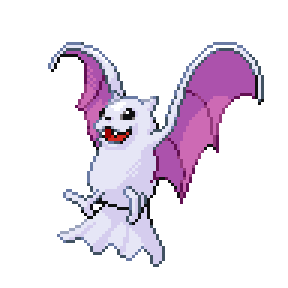
When Dewrunt walks on land, the fin on its head radiates a chilling cold. This icy presence allows it to stay comfortable even in warmer climates.

With a haunting howl, it can summon a fierce hailstorm. This weather-changing ability makes it a force to be reckoned with during winter.

It lives deep within submerged, icy caves, hidden from the outside world. These secluded caverns provide it with both shelter and solitude.
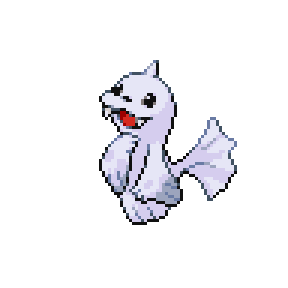
Sailors once got tattoos of this Pokémon before embarking on long journeys, believing it would bring them good luck. This tradition persists among some maritime communities to this day.
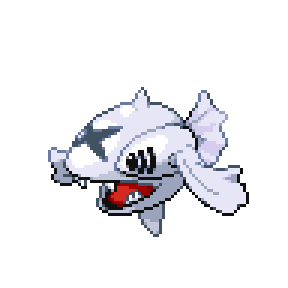
If injured, Dewapex can heal by exposing its body to snow. This regenerative ability makes it thrive in icy environments.

It playfully spits cold water at its friends, showing affection through these chilly splashes. Despite the cold, its companions enjoy these friendly interactions.

It channels psychic energy into its horn before releasing it in bursts. This powerful attack leaves foes stunned and disoriented.

A Dewcool changes its colors based on the climate it grows up in. If it is raised in a colder climate, the body reflects colder tones.

A Dewcool will change its colors based on the area it grows up in. Its skin will reflect a warmer tone if it grows up in a warmer climate.
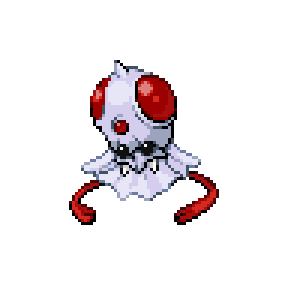
The large fin around Dewcruel's body is actually made up of trillions of translucent tentacles. These delicate structures allow it to move gracefully through the water.
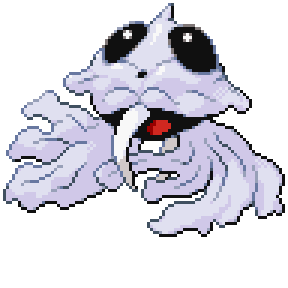
It becomes lonely when separated from its pod, preferring to swim in groups. These pods provide comfort and companionship during long journeys.

The clamp of Dewder's shell is powerful enough to sever limbs with ease. This dangerous trait makes it both feared and respected in the wild.

It swims in a clockwise spin, using its horn as a drill to clear any obstacles in its path. This unique motion allows it to navigate icy waters with ease.

It floats through the smoke of coal power plants, dripping purple acid as it hovers hundreds of feet in the air. The acidic slime causes damage to buildings below.
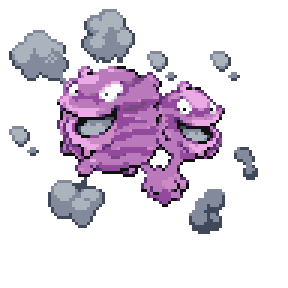
The purple paste covering Grideen's body won't wash off while it stays in the water, and is very slippery. This allows it to easily escape should it be attacked by a Mareanie, slipping through the water with ease.
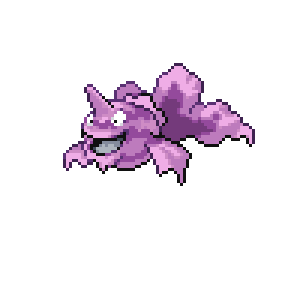
It enters cyberspace, thriving on questionable websites by absorbing faulty code and viruses. If interrupted, the viruses leave its body and into connected computers.
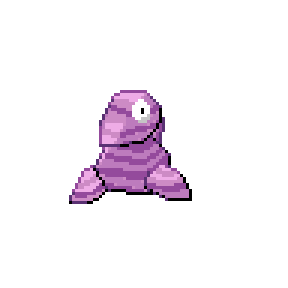
It flies through city streets searching for discarded newspapers and cans. The moment it sees trash leave someone's hand, it swoops down to collect it.
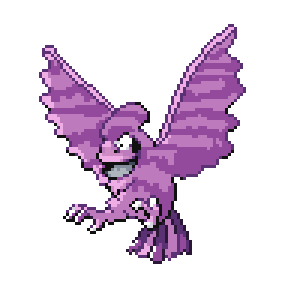
It lives near public parks, feasting on litter left by visitors. The slime that drips from its body acts as a powerful fertilizer, nourishing nearby plants.
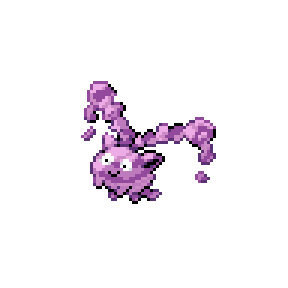
The slime it drips is highly beneficial for plants. It makes its home in rain gutters, compressing its body to fit into tight spaces.
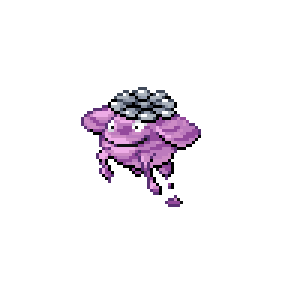
Its feathers shed off in large quantities if it is exposed to clean water. In order to regrow the feathers, it will actively consume garbage.
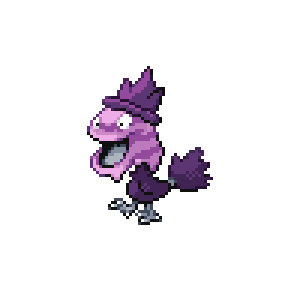
It happily consumes rotting organic material in sewer systems. Despite its grim appearance, it plays a key role in keeping these areas clean.
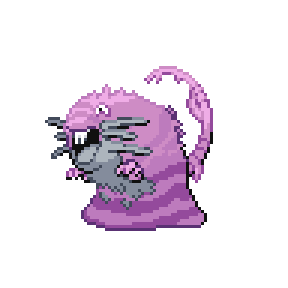
It makes its home near landfills, looking for discarded books or paper. It will consume any literature it finds in order to multiply.
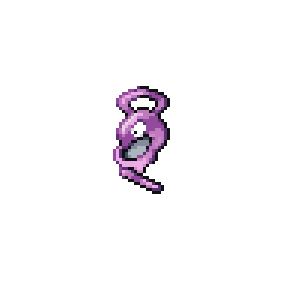
It flies near hospitals to steal medical waste, which it devours in nearby trees. It discards pieces of the waste it doesn't want eat in nearby bushes.
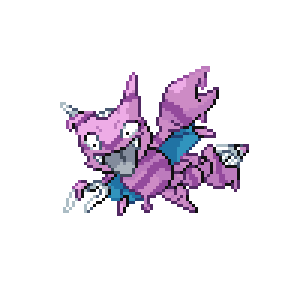
Grisola's oily body takes the shape of coral to blend in with reefs and avoid predators. It only moves when necessary, feeding on debris that falls from passing ships.
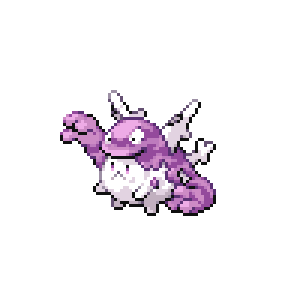
It makes its home near restaurant dumpsters, consuming leftover food. After eating, its slimy body begins to radiate intense heat.
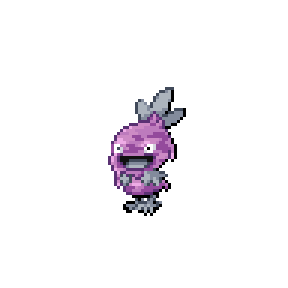
It eats discarded trash near ponds, keeping the water clean. Its sludge-covered body hardens if it stays out of the water too long.
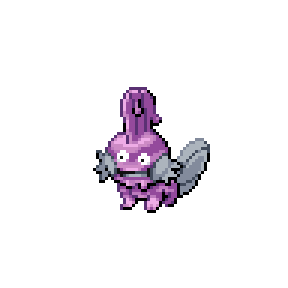
It will actively search for toxic substances so that it can eat them. The sludge that drips off of its skin is used in old Repel recipes.
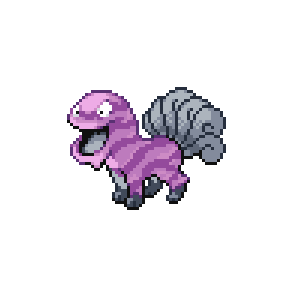
It uses its innards to grab trash cans from the shoreline, dragging them into the waves. Once underwater, it devours the contents with glee.
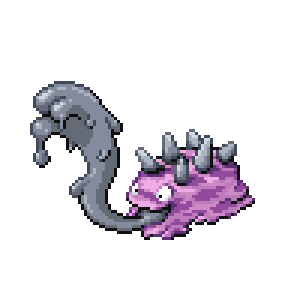
It collects discarded soda cans from landfills to build its den. The structure is surprisingly sturdy and often glimmers in the sunlight.
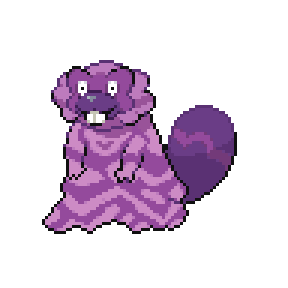
It pretends to be a harmless puddle on a cave floor until prey like Sandshrew wander too close. It then uses Supersonic to stun them before attacking.
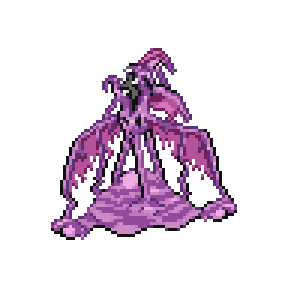
The mucus-like slime coating Gritik's body stores an electric charge. Even brief contact can leave a person or Pokémon stunned for hours.
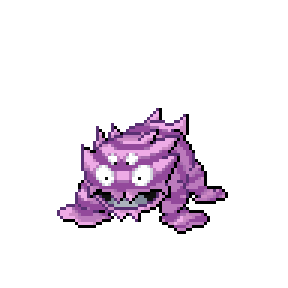
It flies near oil tankers, biting into barrels of oil to feed. It can swallow up to 10 gallons at a time before gliding away, leaving behind small puddles of purple goo.
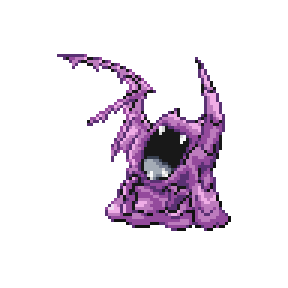
If stepped on, it sticks like glue to a person's boot. It releases a terrible stench so that the person never wants to return to the area.
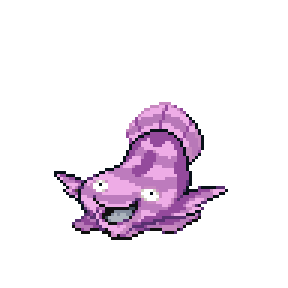
It freezes trash in landfills with an icy breeze before taking large bites. This chilling process neutralizes the foul smells as it eats.
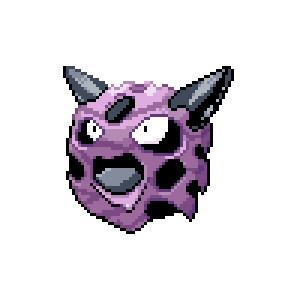
It hides in greenhouses, dissolving bags of fertilizer with acid before consuming them. The slime it leaves behind enhances plant growth.
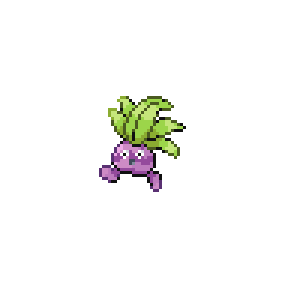
It swims near freighters, eagerly waiting for fuel leaks. It gleefully drinks the spilled fuel, growing more energetic with each gulp.
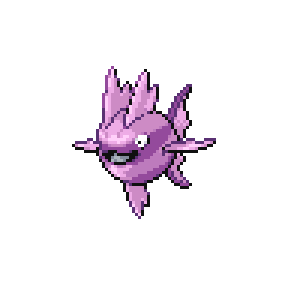
It makes its home near playgrounds, eating trash children leave behind. This odd habit keeps the area clean and safe for play.
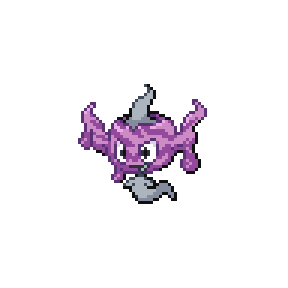
It lies in puddles of spilled oil, absorbing the liquid with glee. Once full, it releases pollen clouds that invigorate nearby plant life.
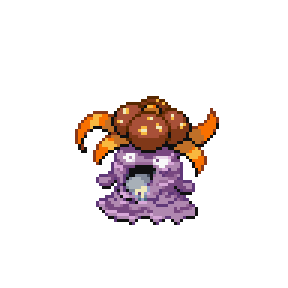
It pierces the sides of cruise ships to cause fuel to leak out. It happily slurps up the liquid, leaving the ship with a sticky violet trail.
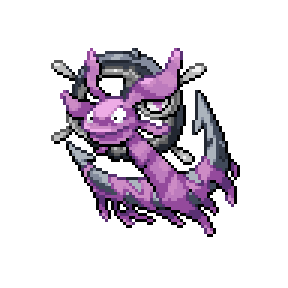
It moves along the ocean floor consuming discarded trash. The more putrid the garbage, the more toxic the spikes it fires become.
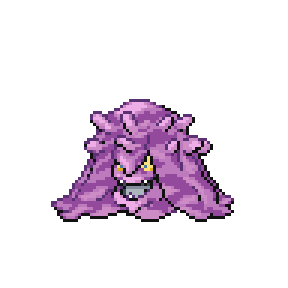
Its slimy body hardens in cold temperatures, making it difficult for it to move during desert nights. During the day it moves surprisingly quickly in the hot sun.
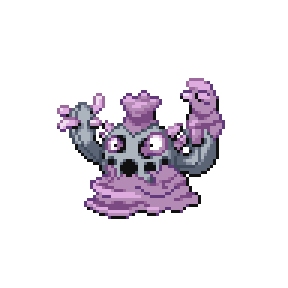
It uses its sharp teeth to chew up and consume plastic bags floating in the sea. This behavior helps clean polluted waters.
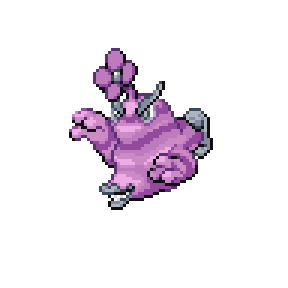
It thrives in industrial areas, using its sharp eyesight to locate hazardous waste spills. When it finds one, it immediately gorges itself on the toxic fluids.
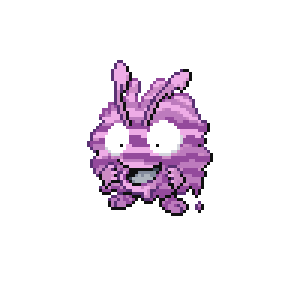
While consuming sewer sludge, Grikaboo emits a surprisingly sweet pumpkin scent. Prolonged exposure to the aroma can cause dizziness and confusion.
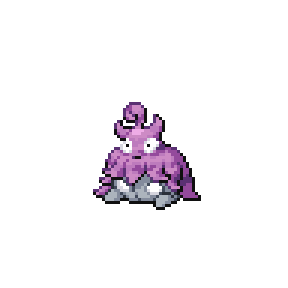
It flies through forests at night searching for prey like Bellsprout and Sunkern. Upon spotting one, it ensnares them in its sticky body with just a touch.
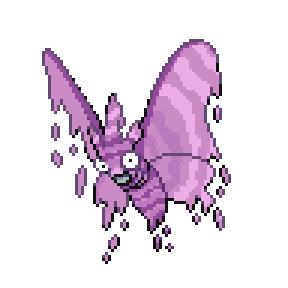
It hypnotizes oil truck drivers to dump their loads onto the street. It then rapidly drinks the spilled liquid, leaving the area spotless and fueling its poisonous body.
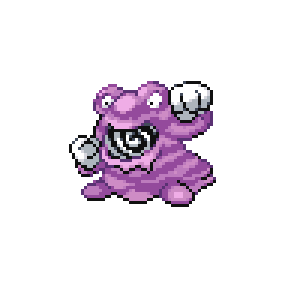
Vines extend from all over its slimy body to ensnare prey like Teddiursa and Meowth. Once captured, it pulls them into its gaping mouth.
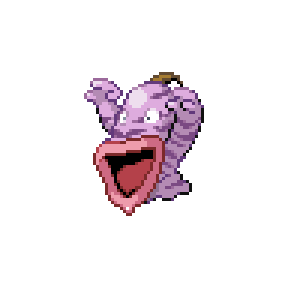
It uses its long tongue to lift clumps of refuse from city dumps, consuming them with glee. The tongue is coated in a protective slime.

Mugey has trouble flying long distances due to the weight of the sludge along its body. The slime covering its body is highly poisonous, repelling predators and allowing it to roost safely.

The purple slime covering Muotto's feathers is extremely corrosive. Despite this, it can still fly with ease, using the protective slime to shield itself from potential threats.

It glides over landfills in search of rotting furniture to make its home. The smell does not bother it in the slightest.

Mumuku uses its poisonous slime-covered innards to stun larger predators before it flees along the sea floor. It quickly retracts its innards as it runs, wanting to avoid getting caught on anything or damaging the environment.

It lives near electronic factories, feasting on discarded or malfunctioning batteries. Its slime-covered body hums with excess electricity.

Musis uses its psychic abilities to lift debris and pollution into its body to eat them. It absorbs the toxic material to strenghten the membrane that protects it.

It swims near sewage runoff locations. Muvanha thrives in hazardous chemicals that would dissolve most Pokémon.
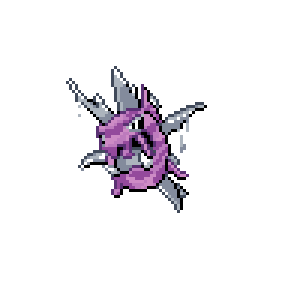
After eating putrid trash, the leaves on its head release a pleasant aroma. Some say this scent helps mask the stench for nearby allies.

Small ponds it inhabits become extremely acidic over time. Few creatures can survive long in its territory.
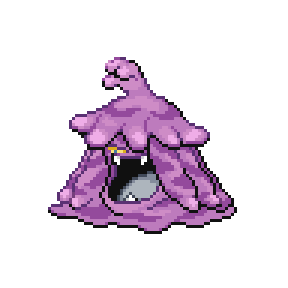
The slime that drips off Muduck's body causes migraines on contact, leaving those around it dizzy and nauseated. Strangely, the symptoms seem to naturally fade once people are out of Muduck's vicinity.

The slime covering its body is highly flammable and can combust at the slightest spark. There is talk of it soon being banned from entering power plants across Kanto.

Muwag rotates the spiral on its tongue to lull prey to sleep before it covers them in thick, viscous slime. This sludge immobilizes prey, allowing Muwag to consume them effortlessly.

Muwhirl uses its hands to uproot poisonous plant life near its pond. It shoves these plants into its mouth to strengthen the poison slime coating its body, making it even more dangerous.

Mucool drifts through sewers, using its long tentacles to grab discarded items. Anything it dissolves contributes to the slime on its body, adding to its growing, sticky mass.

The ooze coating Mumite's metal body is harvested and boiled down into a thick paste. After the poison is boiled out, the paste can be mixed with mashed Watmel Berries and placed on crackers for a delicious yet tangy treat, enjoyed across Kanto.
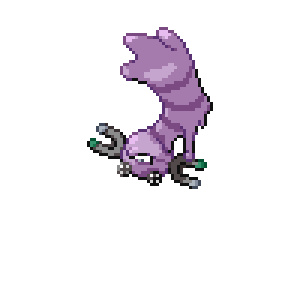
It uses its sharp pincers to break apart glass and metal before consuming the trash. No dump is safe from its appetite.
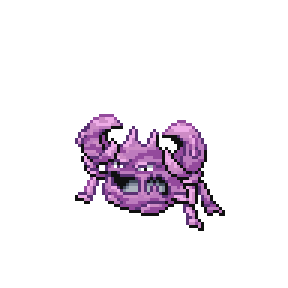
Its hair is extremely hard and will only become malleable when wet. The fibers are used in clothing that is worn in fashion shows.

Groups of Shellown are used by sailors to send messages to other members of their fleet. Their shells are soft and able to change shape at will.
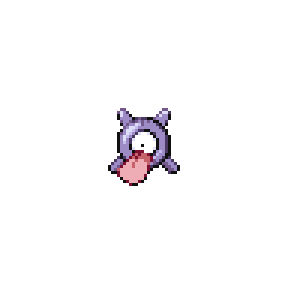
If exposed to too much sunlight, the shell on its head will dry out and crack. The saliva that drips from its tongue is edible and has a tangy flavor.
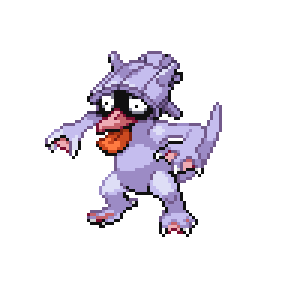
It latches its mouth onto coral and uses pressurized water to break it apart. The coral it eats contains nutrients it needs to strengthen the spikes on its body.

It shoots bubbles at high speeds from its nose to break coral into smaller pieces, which it then feeds on.
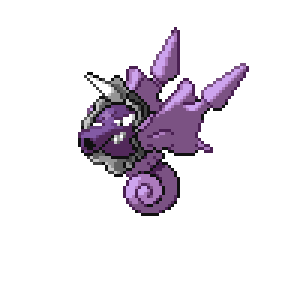
It follows tankers across the ocean, drawn to the noise and movement. Sailors often spot it clinging to the hull, riding along, hoping to be unnoticed.
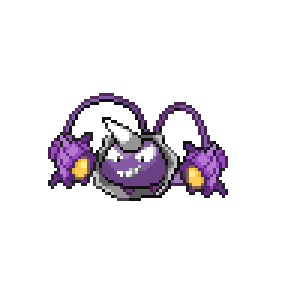
It prefers to live near lighthouses, where it basks in the glow of the beacon. Its presence is considered a sign of good luck for sailors.

It thrives in tidal waves, using the powerful currents to propel itself forward. The chaos of these waves makes it feel most at home.
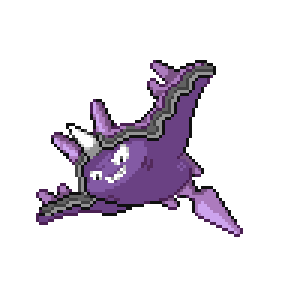
During floods, it moves swiftly through submerged areas, providing aid to stranded Pokémon. Its resilient shell allows it to traverse fast-moving waters with ease.

Yachts often attract this Pokémon, where it glides alongside in search of food. Its presence near luxury vessels adds a touch of the wild to tranquil waters.
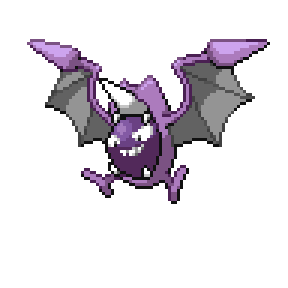
It can propel itself forward in the sea at great speeds, but has trouble with making turns.

Cloymise drifts close to the seafloor, its pearl-like head glowing a deep blue as it sleeps. If disturbed, it retaliates by unleashing a powerful Aurora Beam.
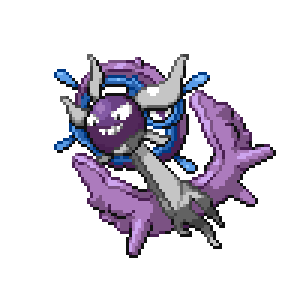
It scavenges dead coral for food, breaking it apart with its powerful shell. This habit keeps reefs clear, allowing new coral to grow in its place.

It clings to underwater cliffs, using them as both shelter and vantage points. From these heights, it watches for prey passing through the depths below.

Its body can withstand the extreme pressure of some of the deepest portions of the sea. Its body can quickly burn if exposed to too much sunlight.

A valuable pearl lies hidden within its shell, polished by years of ocean currents. Many seek it, though few manage to claim the treasure within.

Ancient tribes utilized discarded Cloyby shells for creating armor. The pincers were fashioned into gauntlets used in combat.
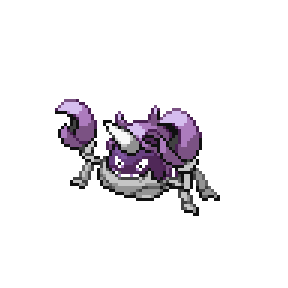
It patrols near cruise ships, scavenging discarded food and scraps. Passengers sometimes catch glimpses of it from the decks and marvel at its sleek shell.
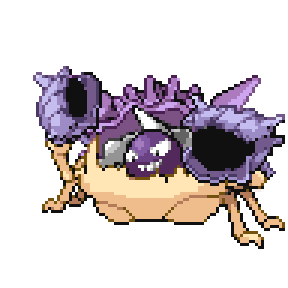
Gaszing inhales smoke from crematoriums, mixing it into its toxic gas. This enriched vapor makes its haze particularly noxious.

The gas surrounding its body burns with incredible intensity. Even a brief touch can leave searing burns on the skin.
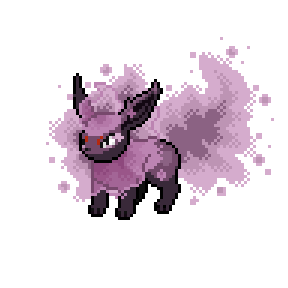
Gasicate steals offerings left on graves, hoarding them in abandoned crypts. It protects its stolen treasures with a dense, toxic fog.

Tales tell of it burrowing into headstones to absorb memories of the deceased. If it deems the person cruel in their past life, it shatters their grave marker in disdain.
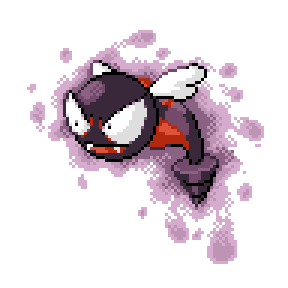
Gasel emits a chilling fog that makes those nearby feel constantly watched. This haunting presence can drain the resolve of even the bravest.

Gascargo resides near cemeteries in hot climates. Its body is composed of molten, purple tar. This strange substance emits a faint, otherworldly glow at night.

Gasnub drift toward lost hikers in snowy mountains, gathering around them. It is said they guide rescuers to those who succumb to the cold.

The gaseous antlers of Gastler radiate an unsettling energy. Psychics claim it allows them to see far into the past.

Gasrogue balances atop gravestones to train its focus and agility. This habit is curious since it can effortlessly float when needed.

Gasnaut projects illusions of unfulfilled desires to distract its prey. These mirages keep victims wandering in circles, unable to escape.

Legends tell of Gasmagius luring travelers in swamps to witches' huts. Those who follow risk losing their sanity to the swamp's shadowy curse.

It disguises itself as a potted plant, often resting on graves. Visitors who linger too long might find themselves startled by its sudden movements.

It lurks in trees above cemeteries, waiting for the right moment to strike. It often devours food offerings left for the departed, leaving mourners baffled.

Legends say it manipulates the spirits of children, using them to play pranks on graveyard visitors. The laughter of unseen children is said to echo through the air when it's near.

It was once believed Gastom's possession of radios let it channel voices of the dead. This has been disproven.
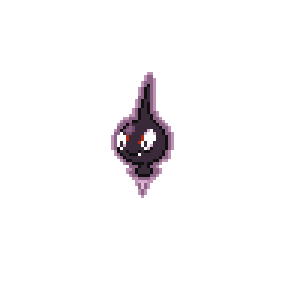
It possesses candles left on graves, lighting them with its eerie presence. It stays hidden within the wax until the candle completely melts away.
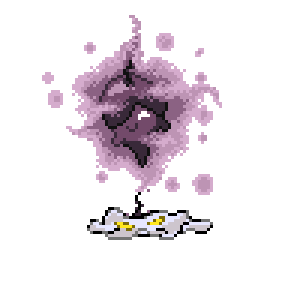
It manipulates smoke from nearby fires, directing it toward foes. This choking haze is often used to incapacitate those who cross its path.
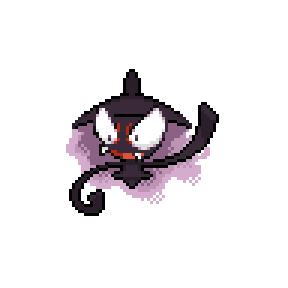
It plays mischievous tricks on miners, shutting off their equipment unexpectedly. This often leads to confusion and frustration deep underground.
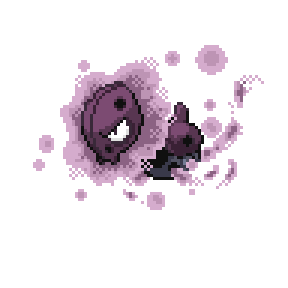
Gaspet fiercely defends its mausoleum home from intruders. Its powerful Shadow Ball serves as a warning to keep graverobbers away.

Gasmask makes mournful wails that echo through graveyards at night. The sounds are thought to be its way of calling to others of its kind.

If its pranks fail to amuse, it retaliates by letting loose shrill, horrible screeches. These sounds can disorient and frighten even the bravest of souls.
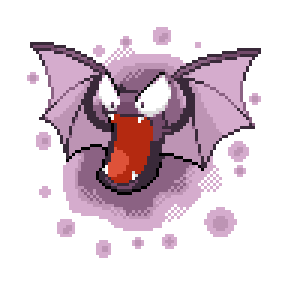
Tales claim Gasruff digs up the graves of the dishonest, revealing hidden secrets. Its eerie actions unsettle those nearby.

Gasbink extends its tongue to lick gemstones found in caves. If it discovers a particularly tasty cluster, it laughs uncontrollably for unknown reasons.
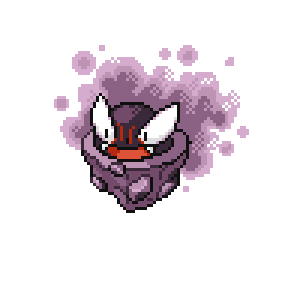
It shadows the elderly, ensuring they are never alone in their final days. Though eerie, its presence is often comforting to those it follows.

Genbone imbues its bone with an eerie, ghostly light before hurling it at foes. Its accuracy with this spectral weapon is unmatched.

The smoke trailing from Gendon's tail is highly toxic, causing sharp pain with a single breath. Its toxic nature makes it a dangerous foe in confined spaces.

Genicate steals belongings it deems valuable and hides them as part of a prank. It then follows its target, laughing mischievously at their frustration.

While asleep, the crystals on Genlix's body emit an eerie glow. This light serves as a warning to any creature that might disturb it.
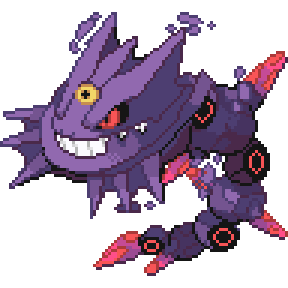
Genitar manipulates shadows to confuse explorers in dark caves. It uses this disorientation to strike its prey with great precision.

Gencario's body is made of poisonous smoke that can solidify when needed. It uses this ability to deliver powerful punches during battle.
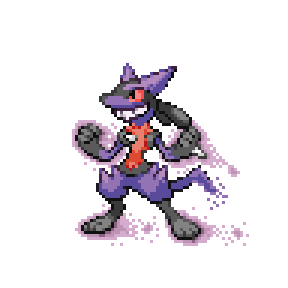
Legends tell of Genqueen standing guard near grieving mothers in cemeteries. Its presence is believed to bring comfort to those in mourning.

Genbat coats its long tongue with saliva to lift prey into the air. It uses this peculiar method to transport its catch while flying.
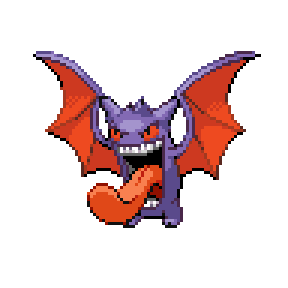
Genlie bites into chunks of ice and snow to maintain its frigid body temperature. It will sleep during the winter months, basking in the cold.

When Genlass laughs, it releases a chilling mist that freezes the surface of the surrounding area. This frost lingers as an ominous warning to intruders.
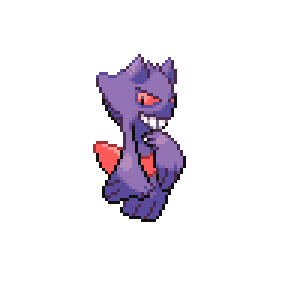
Genvern can turn incorporeal while flying to avoid obstacles in its path. This skill lets it navigate treacherous cave systems with ease.

Levitational abilities allow Genlucha to perform complex wrestling maneuvers in mid-air. It leaves its foes stunned by the combination of strength and agility.

It levitates high above the ground, silently observing those below. If anyone makes eye contact, it will erupt into uncontrollable laughter for reasons unknown.
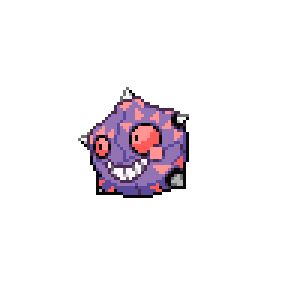
It streaks through the night sky at terrifying speeds, letting out shrill, eerie laughter. Those who hear it report an overwhelming sense of unease.
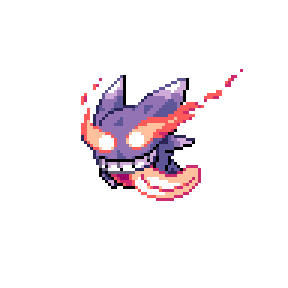
When it consumes a particularly frustrating dream, it explodes in a fit of anger. This detonation is both destructive and cathartic for the Pokémon.

When it eats a nightmare, the flame on its back glows an intense violet. Any other dream causes the flame to glow blue.

Its eyes glow blue when remotely viewing someone's dream. This ability is short-lived, requiring rest before it can be used again.

Ancient witches used feathers from this Pokémon in headdresses, claiming it allowed them to learn secrets from their enemies during sleep. This practice remains steeped in folklore.

Drowtu flaps its wings slowly while near a sleeping person. Some say the movement intensifies if it detects a nightmare, as if trying to ward it off.

The fleece from this Pokémon is used to make nightcaps, aiding restful sleep. Once thought to be myth, this practice has been proven true.

It expels a pink gas while flying, creating a fog that induces vivid daydreams. Those exposed often lose track of time in the haze.

It uses its sharp senses to locate sleepers whose dreams are filled with fear. Once it finds a target, it nibbles softly at their temple to savor their nightmares.

Once, it was believed that pillows stuffed with its down feathers were believed to bring good dreams, but this was later debunked. Instead, they were found to cause unsettling nightmares.

Its venom lingers in the body for months, causing vivid nightmares whenever the victim sleeps. This cruel effect ensures it is feared in the wild.

The wispy antlers on its head glow white when it eats a dream containing food. This glow intensifies with the dream's flavor.

Using its nose drippings, it draws glyphs around those it cares for. These protective symbols help ward off bad dreams.
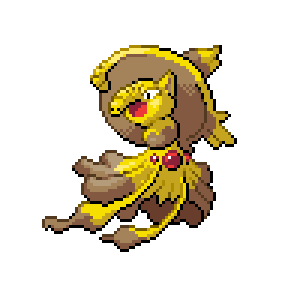
Dwelling in ancient tombs, it guards treasures with eerie vigilance. When scavengers approach, it emits pulses of energy that cause them to fall into a deep sleep.

Its toxins induce intensely happy dreams, but these dreams can make it difficult for the victim to wake up. This effect is both delightful and dangerous.

Its horn glows red while it absorbs a good dream. The brighter the glow, the sweeter the dream it consumes.
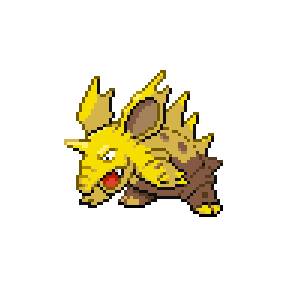
It possesses sleep aid machines and waits patiently for its prey to go to bed. This cunning strategy ensures a steady supply of dreams.
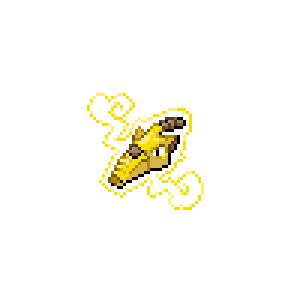
Its waxy body releases a faint scent capable of putting foes to sleep. This effect makes it a dangerous predator for the unwary.

The soft clinking of its metal parts has a soothing effect, often lulling people to sleep. This sound is surprisingly calming despite its eerie source.

By laying a hand on a sleeper's head, it consumes their dreams, making it capable of devouring two dreams at once. This makes it especially efficient during its nightly hunts.

It spins in slow, deliberate circles while remotely consuming a dream. This peculiar ritual adds to its ghostly allure.
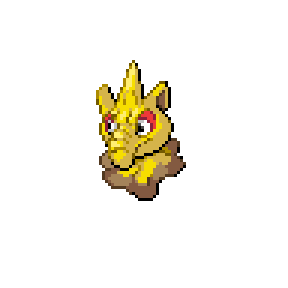
It is drawn to people experiencing nightmares, often floating outside their windows to absorb the negative energy. This action leaves the sleeper oddly refreshed.
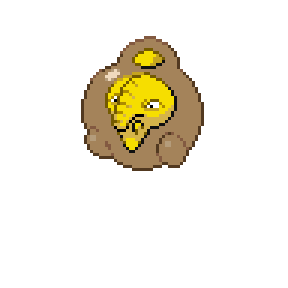
The mask on its nose opens and closes its mouth as it consumes dreams of the elderly. This eerie behavior leaves onlookers unnerved.
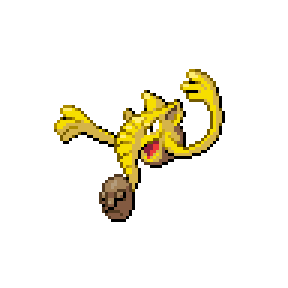
It emits a small shock to a sleeping target, subtly altering their mood. This allows it to influence emotions as it feeds on dreams.

It flaps its wings joyfully while absorbing happy dreams. If it senses a scary dream it immediately stops and flees the area.
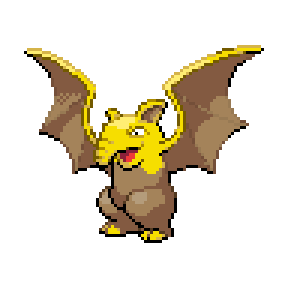
It wraps itself around a person's leg, emitting psychic pulses that induce sleep. This cunning tactic keeps its prey immobilized as it feeds.

Legend says that staring at a spinning Drowpede for too long will put you to sleep. The dreams that follow are said to be deeply unsettling.
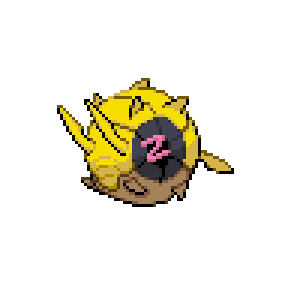
It releases happy bursts of cold air whenever it eats a particularly good dream. This frosty joy makes it a delight to observe in action.

Its large nose can detect sleeping people from up to 100 feet away. It often searches for hikers in cold mountains to feed on their dreams.
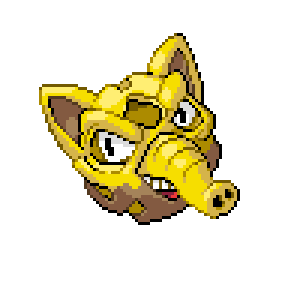
As it flies, it releases bursts of psychic energy, causing daydreams among those nearby. This ability leaves entire crowds distracted and open for feasting.

It preys on those who fall asleep near the shore, consuming their dreams before slipping away. Its presence adds a new danger to sleeping by the sea.

It occasionally remembers funny dreams it consumes, laughing seemingly out of nowhere. This behavior often confuses those around it.

Fiercely loyal, it eats the bad dreams of the family that keeps it as a pet. After a satisfying meal, it barks softly in contentment.

The spores from its fur can send foes into a deep sleep filled with night terrors. These spores are so potent they linger in the air long after dispersal.
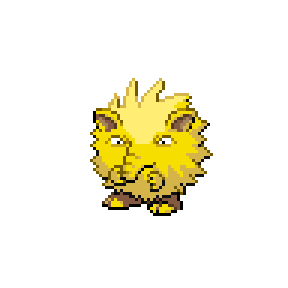
Drowlix's body is covered in tiny thread-like strips of sugar. Though tempting to eat due to the sweet scent, doing so can cause one to fall asleep for over a full day, leaving them completely unaware of their surroundings.
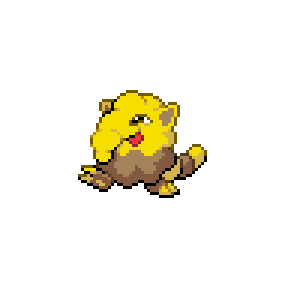
Drowpuff's hair has a sweet flavor: a mix of cherries and chocolate. If licked, a chemical in its hair causes the consumer to fall into a deep sleep within minutes.
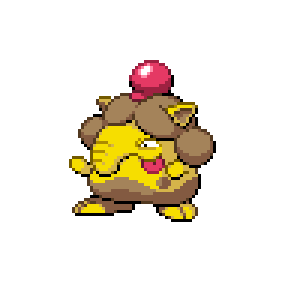
Drowggy uses its psychic abilities to put foes to sleep before delivering a Low Kick. The strike is precise, often leaving opponents helpless and vulnerable.
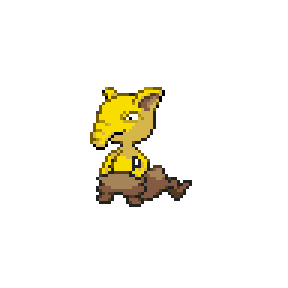
Before such practices were outlawed, police used this Pokémon to torture confessions from sleeping prisoners. This dark history has made it infamous.

After hypnotizing its target, the swirl on its forehead begins to rotate. Once the target realizes they are under its influence, breaking free becomes easier.

It runs alongside trains, absorbing the dreams of passengers as it keeps pace. Its flames turn a vivid blue when it is full.

While it sleeps, Hypowl tucks its pendulum deep within its feathers. Even unconscious, it remains alert to distant sounds.

Hypotto keeps its long, pendulum-like tongue extended from its beak at all times. It sways gently as it walks, lulling nearby creatures.

Hypgle marks territory by dripping multicolored ink from its pendulum. Each hue signals a different emotion or warning.

The large spines on Hypslash's back were once ground into fine dust and used as sleep aids. The practice is now considered dangerous.

Thick mucus drips from Hyprino's large nose, laced with potent poison. A single drop can paralyze small prey.
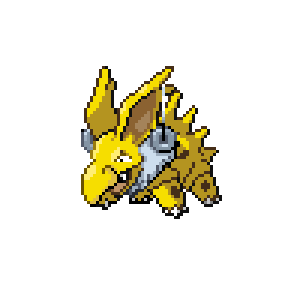
Hyptula weaves webs infused with sleep-inducing properties. Anything caught in the strands falls into a deep slumber within moments.
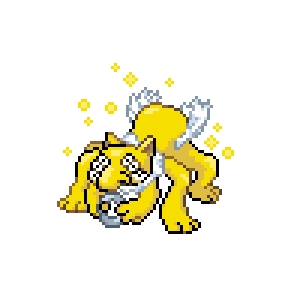
During the day, Hyprona's pendulums absorb sunlight to power its fire-based attacks. They glow faintly at dusk and before battle.
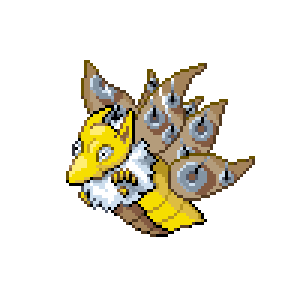
The pendulum on Hypxio's tail helps it focus and channel electricity. It swings rhythmically as sparks build up along its fur.

At night, Hypbell roams quiet towns and releases a sleep-inducing powder. Once those in the area slumber, it feasts on the dreams of those nearby.

When resting, it freezes the water around it. It uses this ice as a protective barrier, ensuring no predators disturb its slumber.
